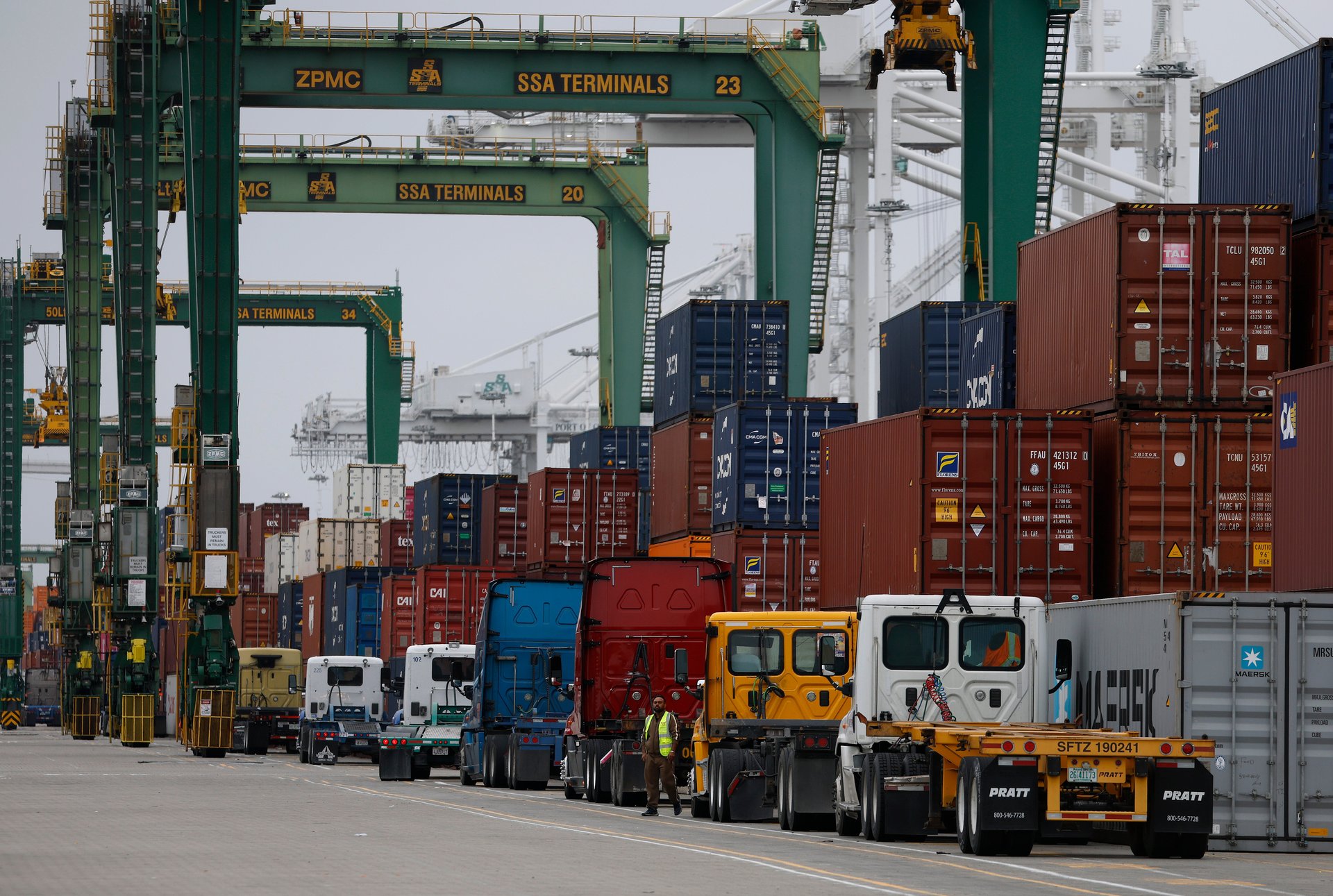4 new signs that Trump's tariffs are starting to bite
From cratering consumer confidence to shrinking GDP, the economic indicators are looking bleaker

Economic indicators are beginning to pile up, painting a picture of a global economy that’s starting to feel the teeth of President Donald Trump’s tariffs.
Suggested Reading
Quarterly gross domestic product (GDP) shrunk for the first time since early 2022, private sector jobs saw their slowest growth in close to a year, Chinese factories are slowing manufacturing, and consumer confidence is cratering.
Related Content
“Once everything kicks in, we’ll have a slower economy, the labor market slowing,” Kathy Bostjancic, the chief economist for insurance company Nationwide Mutual, told The New York Times. “Hiring has already stalled, and we expect the unemployment rate to start to rise.”
GDP goes backwards
Data from the Commerce Department’s Bureau of Economic Analysis showed that first-quarter GDP shrunk at an annualized clip of 0.3% during the first three months of 2025, more than the 0.2% decline expected by economists surveyed by Bloomberg. It was the first time since 2002 that gross GDP has fallen.
The stock market dropped upon news of the report. Shortly after, President Trump wrote on social media that people should instead blame former President Joe Biden for the struggling economy.
Trump’s tariffs have hit the U.S. economy hard. In a note Wednesday, Ian Shepherdson, chief economist at Pantheon Macroeconomics, said the future looks bleak if everything stays the same.
“A period of stagnation now likely lies ahead if the current set of tariffs is maintained, with recession the most likely outcome if the additional reciprocal tariffs are imposed in full in July,” he said, as reported by NBC News.
Private-sector jobs growth slows
A report from payroll processor ADP (ADP) showed that private sector payrolls grew a meager 62,000 in April, the smallest gain since July 2024. Those numbers were a fall-off from 147,000 private-sector jobs added in March and well off the Dow Jones (NWSA) consensus estimate: an increase of 120,000.
In response to Trump’s tariffs, companies significantly slowed hiring.
“Unease is the word of the day,” ADP’s chief economist, Nela Richardson, said in a statement accompanying the report. “Employers are trying to reconcile policy and consumer uncertainty with a run of mostly positive economic data,” said “It can be difficult to make hiring decisions in such an environment.”
China factory orders decrease
Currently, the president’s tariffs on Chinese goods sit at 145%, and the manufacturing sector is taking a hit because many Chinese factories are sitting idle.
A survey of industrial firms released Wednesday by China’s National Bureau of Statistics (NBS) has provided a snapshot of how the U.S. tariffs are affecting the Chinese economy. The report shows a sharp slowdown in factory activity in China.
Zhao Qinghe, a senior statistician at the NBS, said in a statement that the contraction in factory activity was due to “sharp changes in the external environment and other factors.”
Meanwhile, China has responded to the U.S.-imposed tariffs with 125% tariffs of its own on American goods.
Consumer confidence craters
Consumer confidence tanked 7.9 points in April to a reading of 86, the Conference Board said in a survey released Tuesday. That’s the lowest reading since May 2020 and a larger decline than economists had projected. In addition, the survey’s Expectations Index — which captures people’s outlook on the economy — crashed 12.5 points this month to 54.4, the lowest level in 13 years.
Still, not every economist thinks the sky is falling. Alice Kassens, the director of the Center for Economic Freedom at Roanoke College, told Quartz that despite the contraction, consumer spending remained strong.
“A bright sign in the report is consumer spending, which accounts for almost 70% of all spending in the economy, increased by 1.4%, with increases across goods and services, the latter of which are not boosted by a flurry of spending ahead of the tariffs,” Kassens said.
She noted that a reduction in government spending and increased imports — which are a drag on GDP — offset the gains in consumer spending.
“Coupled with a softening labor market, the economy has certainly slowed, although this report should not ring alarm bells,” Kassens said.